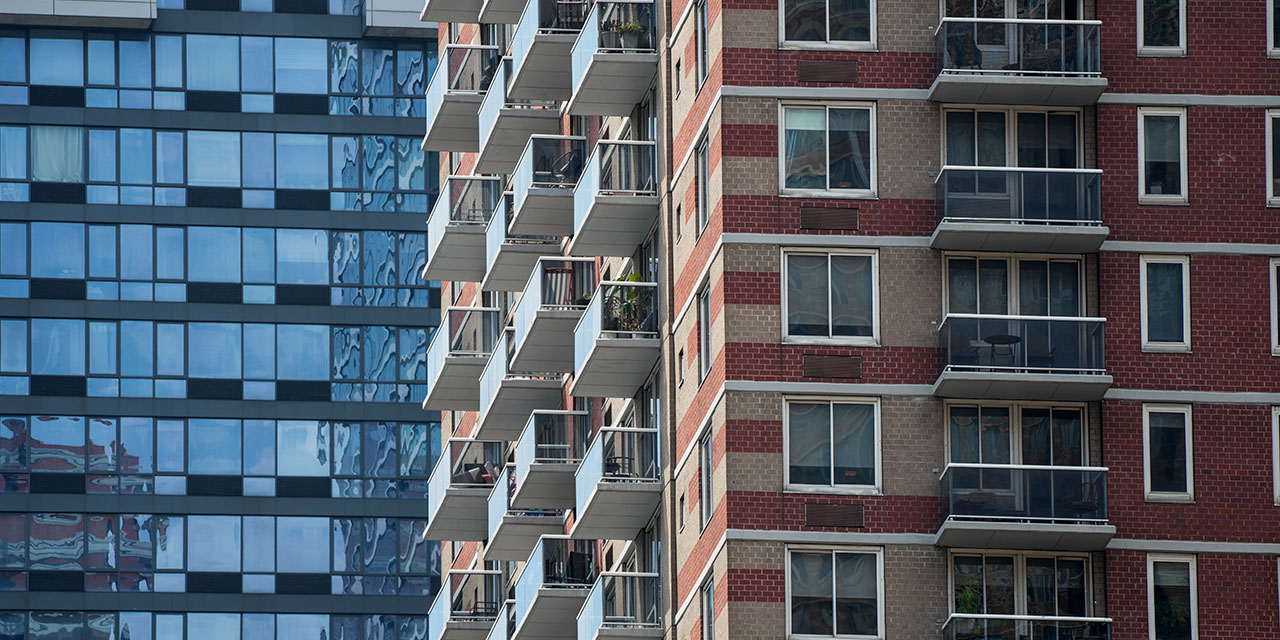
One of the top concerns for New Yorkers heading to the polls this November is affordability. Six in ten report having trouble meeting basic financial needs, while 78 percent say that housing costs have worsened in recent years and 42 percent cite housing as their top concern.
The mayoral candidates are listening. Democratic Party nominee Zohran Mamdani has pledged to freeze rents on all rent-controlled units—half of the city’s apartments—and build 200,000 new rent-stabilized apartments over the next decade. Mayor Eric Adams, running as an independent, told a group of landlords that he opposes all rent freezes; he prefers his City of Yes program, which focuses on building affordable homes in previously restricted zones. Curtis Sliwa, the Republican nominee, told The City that he would support a rent freeze only if data justified it but has indicated that any rent hike needs to be “minimal.”
Finally, a reason to check your email.
Sign up for our free newsletter today.
Certainly, the candidates should listen to voters’ concerns about affordability. But they should also pay attention to the data, which show that price controls—however appealing they may seem at first—ultimately harm the people they’re intended to help.
Studies of the long-term impact of rent control in cities like Cambridge and San Francisco have led economists to conclude that “while rent control appears to help current tenants in the short run, in the long run it decreases affordability, fuels gentrification, and creates negative spillovers on the surrounding neighborhood.”
Why does rent control have such adverse effects? The studies show that, over time, it distorts the housing market and triggers a series of unintended consequences. Tenants who might otherwise move—due to life changes or rising incomes—often stay put to preserve their below-market rents. This reduces turnover and shrinks the pool of available units. With supply constrained and demand unchanged, prices for unregulated apartments rise.
Meantime, landlords who can’t charge market rates for rent-controlled units have little incentive to invest in upkeep or improvements, leading to deteriorating building conditions. In some cases, their only viable path to profitability is converting rental buildings into high-end condominiums—further reducing the supply of rental housing.
The cumulative result is a deeper affordability crisis: fewer available units, higher rents, and a widening gap between the housing haves and have-nots.
New York City’s rent control laws were first enacted in the 1940s, during World War II, as part of the Emergency Price Control Act. Their long-term effects became visible by the late 1960s and 1970s, when many landlords, facing capped rents and rising costs, abandoned or failed to maintain their buildings, contributing to widespread urban decay and apartment vacancies.
In cities like Cambridge and San Francisco, rent control has led to misallocated apartments, housing shortages, worsening conditions for low-income residents, deteriorating buildings, long waiting lists, and inflated rents for the limited number of units that do become available.
Research also shows that lifting rent control boosts property values, improves rental turnover, and increases both the quality and supply of housing. After Massachusetts voters approved a 1994 referendum abolishing rent control, the assessed value of previously regulated properties rose sharply—by 18 to 25 percent. The effects extended beyond those units: nearby properties that had never been subject to rent control saw their values rise by an average of 12 percent. Though the formerly controlled units gained more in percentage terms, the never-controlled stock was larger and generally more desirable—accounting for over half of the $1 billion increase in residential real estate value over the following decade.
While rising property values might seem like a threat to affordability, they actually reflect a healthier, more dynamic housing market. When controls are lifted, landlords reinvest and expand the housing stock, increasing supply. That forces landlords to compete for tenants rather than tenants competing for scarce units—putting downward pressure on rents. In the long run, affordability improves not by capping prices but by ensuring abundant, well-maintained housing.
Argentina provides a more recent example of the benefits of decontrol. In late 2023, President Javier Milei repealed rent-control measures as part of a broader market-liberalization agenda. The results were immediate: rental listings in Buenos Aires surged nearly 200 percent, as landlords returned to the market and new units became available. While nominal rents initially rose, real rents—adjusted for inflation—fell by roughly 40 percent, easing affordability for tenants and restoring price signals to the housing sector.
As in Massachusetts and California, the Argentina case shows that removing price ceilings benefits not only landlords of formerly regulated units but the entire housing market. It attracts investment, boosts supply, and ultimately expands affordable access to housing across the board.
New York City’s mayoral candidates should take note: rent freezes may be politically popular, but their long-term consequences are both unfortunate and inevitable. The market understands what policymakers too often overlook: rent control suppresses investment, reduces supply, and undermines the stability of the entire housing sector.
If the goal is true affordability, the answer isn’t freezing rents but creating strong incentives to build, invest, and expand housing access for all New Yorkers.
Photo by Zamek/VIEWpress
City Journal is a publication of the Manhattan Institute for Policy Research (MI), a leading free-market think tank. Are you interested in supporting the magazine? As a 501(c)(3) nonprofit, donations in support of MI and City Journal are fully tax-deductible as provided by law (EIN #13-2912529).
Source link


















